Trung-Hieu Tran
A GPU-Accelerated Light-field Super-resolution Framework Based on Mixed Noise Model and Weighted Regularization
Jun 09, 2022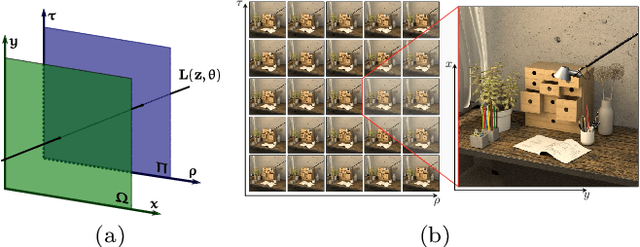
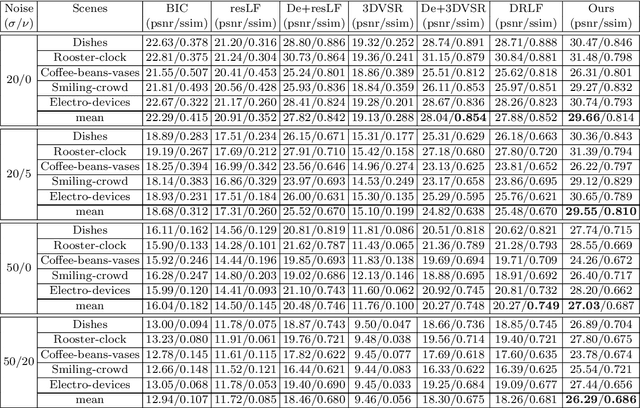

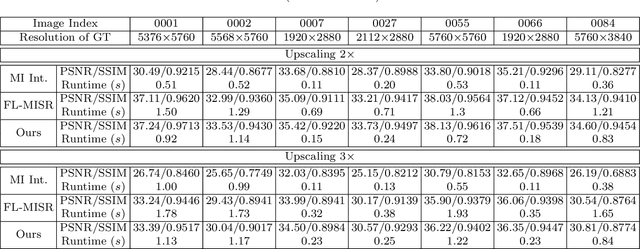
Abstract:This paper presents a GPU-accelerated computational framework for reconstructing high resolution (HR) LF images under a mixed Gaussian-Impulse noise condition. The main focus is on developing a high-performance approach considering processing speed and reconstruction quality. From a statistical perspective, we derive a joint $\ell^1$-$\ell^2$ data fidelity term for penalizing the HR reconstruction error taking into account the mixed noise situation. For regularization, we employ the weighted non-local total variation approach, which allows us to effectively realize LF image prior through a proper weighting scheme. We show that the alternating direction method of multipliers algorithm (ADMM) can be used to simplify the computation complexity and results in a high-performance parallel computation on the GPU Platform. An extensive experiment is conducted on both synthetic 4D LF dataset and natural image dataset to validate the proposed SR model's robustness and evaluate the accelerated optimizer's performance. The experimental results show that our approach achieves better reconstruction quality under severe mixed-noise conditions as compared to the state-of-the-art approaches. In addition, the proposed approach overcomes the limitation of the previous work in handling large-scale SR tasks. While fitting within a single off-the-shelf GPU, the proposed accelerator provides an average speedup of 2.46$\times$ and 1.57$\times$ for $\times 2$ and $\times 3$ SR tasks, respectively. In addition, a speedup of $77\times$ is achieved as compared to CPU execution.
3DVSR: 3D EPI Volume-based Approach for Angular and Spatial Light field Image Super-resolution
Jan 04, 2022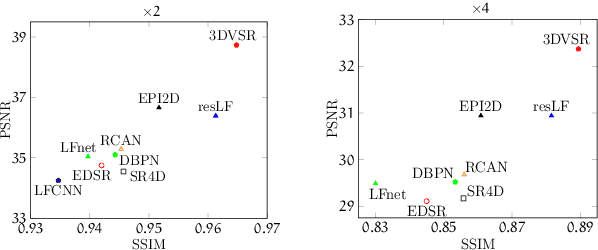
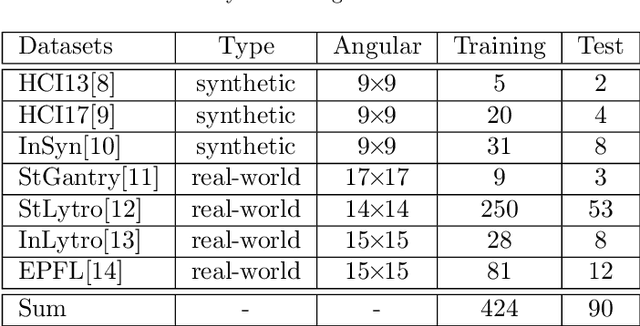
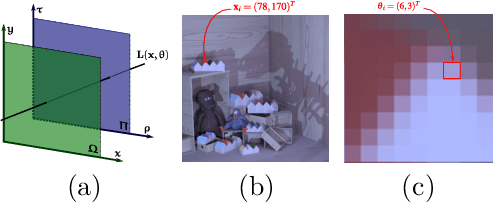

Abstract:Light field (LF) imaging, which captures both spatial and angular information of a scene, is undoubtedly beneficial to numerous applications. Although various techniques have been proposed for LF acquisition, achieving both angularly and spatially high-resolution LF remains a technology challenge. In this paper, a learning-based approach applied to 3D epipolar image (EPI) is proposed to reconstruct high-resolution LF. Through a 2-stage super-resolution framework, the proposed approach effectively addresses various LF super-resolution (SR) problems, i.e., spatial SR, angular SR, and angular-spatial SR. While the first stage provides flexible options to up-sample EPI volume to the desired resolution, the second stage, which consists of a novel EPI volume-based refinement network (EVRN), substantially enhances the quality of the high-resolution EPI volume. An extensive evaluation on 90 challenging synthetic and real-world light field scenes from 7 published datasets shows that the proposed approach outperforms state-of-the-art methods to a large extend for both spatial and angular super-resolution problem, i.e., an average peak signal to noise ratio improvement of more than 2.0 dB, 1.4 dB, and 3.14 dB in spatial SR $\times 2$, spatial SR $\times 4$, and angular SR respectively. The reconstructed 4D light field demonstrates a balanced performance distribution across all perspective images and presents superior visual quality compared to the previous works.
FL-MISR: Fast Large-Scale Multi-Image Super-Resolution for Computed Tomography Based on Multi-GPU Acceleration
Aug 09, 2021
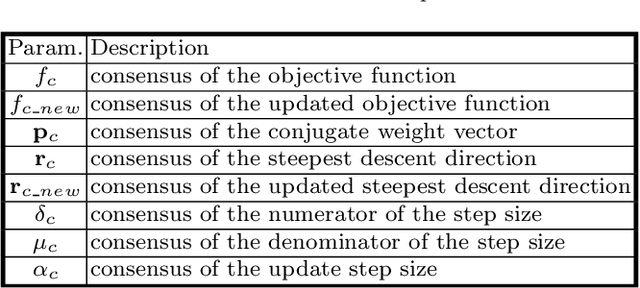
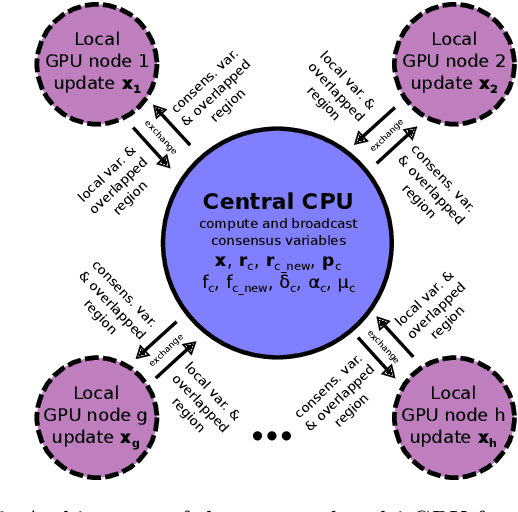

Abstract:Multi-image super-resolution (MISR) usually outperforms single-image super-resolution (SISR) under a proper inter-image alignment by explicitly exploiting the inter-image correlation. However, the large computational demand encumbers the deployment of MISR methods in practice. In this work, we propose a distributed optimization framework based on data parallelism for fast large-scale MISR which supports multi- GPU acceleration, named FL-MISR. Inter-GPU communication for the exchange of local variables and over-lapped regions is enabled to impose a consensus convergence of the distributed task allocated to each GPU node. We have seamlessly integrated FL-MISR into the computed tomography (CT) imaging system by super-resolving multiple projections of the same view acquired by subpixel detector shift. The SR reconstruction is performed on the fly during the CT acquisition such that no additional computation time is introduced. We evaluated FL-MISR quantitatively and qualitatively on multiple objects including aluminium cylindrical phantoms, QRM bar pattern phantoms, and concrete joints. Experiments show that FL-MISR can effectively improve the spatial resolution of CT systems in modulation transfer function (MTF) and visual perception. Besides, comparing to a multi-core CPU implementation, FL-MISR achieves a more than 50x speedup on an off-the-shelf 4-GPU system.
Leveraging Transfer Learning for Reliable Intelligence Identification on Vietnamese SNSs (ReINTEL)
Dec 16, 2020


Abstract:This paper proposed several transformer-based approaches for Reliable Intelligence Identification on Vietnamese social network sites at VLSP 2020 evaluation campaign. We exploit both of monolingual and multilingual pre-trained models. Besides, we utilize the ensemble method to improve the robustness of different approaches. Our team achieved a score of 0.9378 at ROC-AUC metric in the private test set which is competitive to other participants.
Variational Disparity Estimation Framework for Plenoptic Image
Apr 18, 2018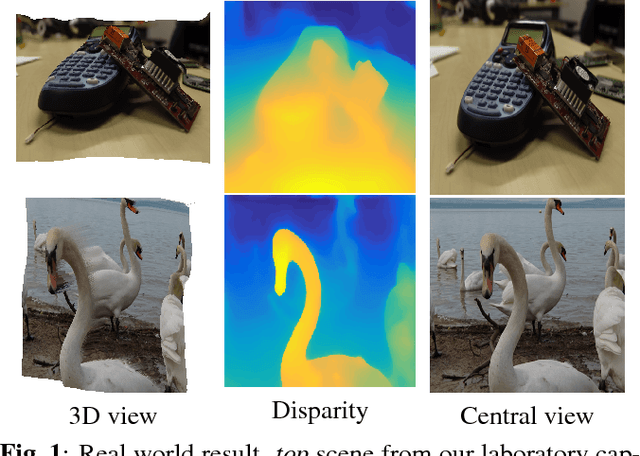
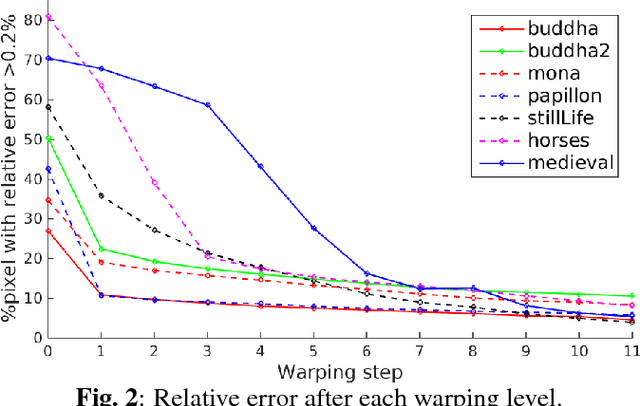

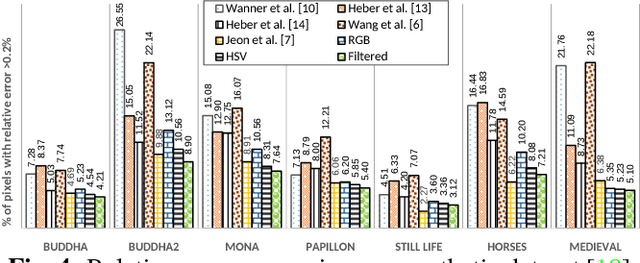
Abstract:This paper presents a computational framework for accurately estimating the disparity map of plenoptic images. The proposed framework is based on the variational principle and provides intrinsic sub-pixel precision. The light-field motion tensor introduced in the framework allows us to combine advanced robust data terms as well as provides explicit treatments for different color channels. A warping strategy is embedded in our framework for tackling the large displacement problem. We also show that by applying a simple regularization term and a guided median filtering, the accuracy of displacement field at occluded area could be greatly enhanced. We demonstrate the excellent performance of the proposed framework by intensive comparisons with the Lytro software and contemporary approaches on both synthetic and real-world datasets.
 Add to Chrome
Add to Chrome Add to Firefox
Add to Firefox Add to Edge
Add to Edge